What Is Adequate Treatment for Babies With Gbs+ Moms
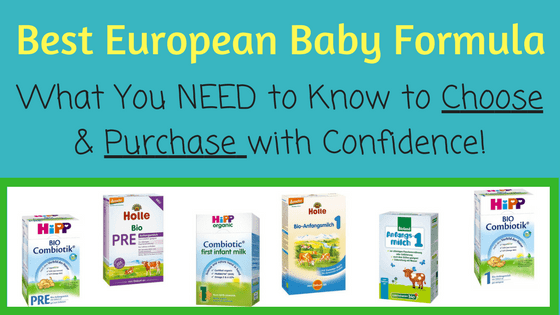
Baguettes from France are just better. The sausage (and beer!) from Germany kicks my supermarket's barrel. The pasta in Italia is far superior to the elbow noodles in my pantry. The port wine from Portugal … you go it…..
European Formula. Most people think of baby formula from Europe in the same way – that information technology's far superior to U.s.a. formula. When I probe parents who want this often-illusive European formula most why they adopt a European brand –the answers is usually some form of:
"It's better regulated" or "the ingredients are cleaner".
Both of these answers are true from a certain perspective. But honestly, it's real existent hard to discover articulate information almost what makes European formula unlike from (or meliorate than) US formula. There are lots of blogs that requite generic differences (like packaging) and hit on the organic issue. Just no 1 seems to be discussing differences in regulatory guidelines or required ingredients or how to get is safely – pretty big issues!
Well, we are gonna trounce that topic. In this article, I am going to:
- Break down the differences in regulations and practices between the United states and EU formulas.
- Cover the differences in nutrition requirements that could brand a big divergence for your baby.
- What you demand to know earlier importing a European formula.
- Suspension downwardly the differences betwixt the three major brands of European formula: Holle, HiPP and Lebenswert.
Differences betwixt United states of america and European Formula Industry:
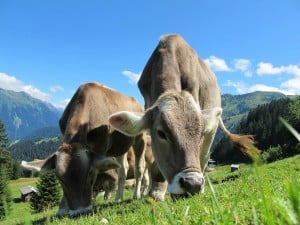 one) Farming Practices
one) Farming Practices
The curt summary is: generally speaking, the EU farming practices are simply meliorate from an baby standpoint. The governing body of European formula regulation is the European Commission (equivalent to the FDA in the US). They require that there be no detectable levels of pesticide residues in whatsoever infant formula. This means that all European formulas are organic so some! Most of the formulas are made from milk cows living on a Demeter farm.
Demeter is similar organic++. It means the subcontract is "biodynamic" – so no synthetic pesticides or fertilizers or GMO technology. The farming practices are sustainable, and the cows graze and swallow their natural nutrient source, which is grass. This makes for some healthy and happy cows! Grass-fed cows produce milk that may take additional benefits to infants, compared to cows raised on corn (like most in the United states of america).
Sadly, in the US, we have organic formulas, and we have a grass-fed formula (Similac's Pure Elation). Yous can't get both organic and grass-fed. If you go with a European brand – you tin can go both… which is pretty awesome.
Lastly, farms used to produce ingredients for European formulas get major points for sustainability. This really doesn't affect the nutrition the infant receives, but is worth mentioning since it is important to many families. Considering many of the farms are biodynamic, they are too carbon-neutral, and you'll see that phrase on some European formula's packaging. Secondly, a few of the companies go out of their mode to acquire palm oil from sustainable sources – which is unusual. None of the United states of america companies do this.
 2) Goat Milk Formula Is A Matter!
2) Goat Milk Formula Is A Matter!
The EU is ahead of the US on the caprine animal milk formula front. Goat'southward milk is fully approved as a base for infant formula and widely available in the European union. I'll accept an article coming out presently that volition break downwards the regulations and options you have bachelor if you are because goat milk formula.
The main brands are Holle (a German company) and Nanny Care (a British visitor). If you want to go groovy learning more about caprine animal milk formula, here is a video I made comparing goat milk protein vs cow milk protein in formula. And hither is an article comparing Holle vs Nanny Care vs Kabrita caprine animal milk formulas.
three) European Formula Comes in Stages (This is Large)
The EU handles formula totally differently than the FDA. In the United states, the FDA regulates "Babe Formula" which is formula fabricated for infants from nascency – 12 months. The EU separates their formulas into 2 distinct stages:
- European "Infant Formula" is made for babies from birth to the beginning of solid foods (between 4 – 6 months). This is usually labeled Stage 1.
- European "Follow on Formula" is for infants after solid foods take been started (between 4 – 6 months) until ane year. This is ordinarily labeled Stage 2.
The of import thing to know is that: if you choose a European Formula, it'southward pretty dang important to go the right phase for your baby'southward historic period ! The diet is much more tailored for specific age groups. This is quite different from Us formulas, where I consider the whole stage approach to exist mostly marketing and not really important.
Phase iii European formulas are what we'd call "toddler formulas". I'm non going to comprehend those here since this commodity would be considered a book at that point.
Differences between USA and European Formula Regulations:
The European Commission regulates European formula, similar the FDA regulates Us formula. There are a lot of differences in the requirements and nutrients that you need to know about before making a switch.
Commencement (as merely mentioned), Europe does formula in stages. Secondly, they also have some special requirements for partially hydrolyzed and fully hydrolyzed poly peptide formulas, since these formulas have a unlike protein base than just straight moo-cow's milk proteins (one, 2). The FDA doesn't distinguish between types of formulas like this – there is just one set of requirements for all cow's milk formulas – and these requirements are for whatever infant betwixt the ages of birth to 12 months (3).
There's lots of pocket-sized differences in the minimum and maximum ranges set for various vitamins and minerals. But, I'm just going to give you the major differences that differ between how Usa and European brands have called to adhere to these guidelines (so basically, the differences that matter).
1) Iron
Patently Americans and Europeans accept very different opinions on how much iron should become in baby formula (and how tight men's jeans should be… but I digress). Hither are the limits ready by the two governing bodies:
- The FDA requires US infant formulas to have betwixt 0.15 – 3.30 mg/100kcal iron.
- The European Commission requires European Babe Formula (babies 0 – vi months) to take between 0.3 – one.3 mg/100kcal iron.
- The European Commission requires European Follow-On Formula (babies vi – 12 months) to have between 0.vi – ane.seven mg/100kcal iron.
The US range is just much larger than the European range. Simply here's where the existent difference comes into play. U.s. formulas all seem to follow the classic "more is better" approach and add atomic number 26 closer to the upper end of the range. For example, hither are the iron concentrations in the major US brand formulas:
- Enfamil Newborn Enfamil Baby = i.eight mg/100kcal
- Similac Advance (and Pro Accelerate) = 1.9 mg/100kcal
- Gerber Gentle Stage ane (0 – 12 months) = 1.5 mg/100kcal
- Gerber Gentle Stage 2 (half-dozen – 12 months) = ii.0 mg/100kcal
Notice that all of these United states formulas have iron concentrations well above the maximum allowable concentrations set by the EU for babies of that age . This is ane of the biggest differences between the continents! You will patently notice unlike opinions on who is right and should discuss it with your pediatrician. Just here'south what matters. If you are using a European formula, you lot actually need to be using a "follow-on" formula (stage two) once your infant is betwixt four – vi months of age to be sure they are getting enough iron in their nutrition. Focusing on iron-rich solid foods will too help! It's a skillful conversation to take with your pediatrician who volition know all of your unique babe'south take chances factors for potential fe deficiency.
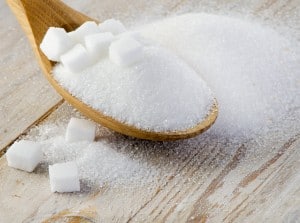 2) Sugar and Lactose
2) Sugar and Lactose
I do not similar seeing saccharide (or sucrose) in baby formula and have been talking nearly information technology for a while. I am happy to say that Europe agrees with me! European cow's milk formulas with intact proteins (which is most formulas) cannot have whatever sucrose at all! Formulas fabricated from hydrolyzed proteins are allowed to have a little sucrose, but no more than 20%. PLUS the European Commission sets a minimum concentrations of lactose so that all formulas have to have at least 30% carbohydrate from lactose. The FDA doesn't have any such requirements – regarding sucrose, or %lactose. Lots of the "sensitive" formulas in the United states would violate this %lactose rule, and Similac Sensitive and virtually US soy formulas would besides violate the sucrose rule. And so there's that ….
three) Other Ingredients
- The Europeans are a piddling more bourgeois with their additives than we are. They do not let whatsoever of the following additives to be used in European Formula: locust glue, guar gum, pectins, fructans (similar inulin), and carrageenan. Carrageenan is normally found in Us prepare-to-feed formulas.
- 50-Carnitine is required in European babe formulas (so for 0-6 months) that are partially hydrolyzed. The U.s.a. doesn't require it at all.
- Inositol is simply required in European baby formulas (so for 0-vi months). Information technology's non required in the follow-on formula. The U.s.a. as well requires it – and then it's in all formula in America.
- The EU recently passed new regulation that will require DHA be added to all infant and all follow-on formula to at least 20mg/100kcal (iv)! Companies accept until 2020 to make this change. The US doesn't require DHA at all – although most companies exercise add information technology. European formulas that do add DHA utilize some different sources than American companies (like fish oil). Then, it will exist really heady to see how the European formulas adhere to these new requirements over the next few years.
- European formulas have different "extras" than American formulas. In the United states, y'all oftentimes see carnitine, taurine or nucleotides added to formula. These are non found in whatsoever of the main European moo-cow's milk formulas (HiPP, Holle, or Lebenswert). Even so, it is common to see single amino acids added to European formulas, particularly phenylalanine, tryptophan, and tyrosine. None of these are required, but they are often added. I betoken out which formulas add together which amino acids in the make breakdown beneath.
- European formulas take more soy-free options. This is corking for babies who are sensitive, and I wish the United states had more than such options bachelor for our babies.
What Y'all Need to Know Before Importing A European Formula:
ane) Accurate Information is difficult to come by!
Well – evidently this article rocks 🙂 Just, accurate lists of ingredients are hard to find! I often have to rely on 3rd party websites to find ingredients, or try to translate foreign labels into English. None of this is ideal! It's of import to know that what yous get is what yous think you are getting! A proficient supplier will aid with this (more than on that beneath). As well, the European union recently passed regulation that will require more than foreigner-friendly labeling for us American parents since at that place has been and then much exporting of European formula over the last few years. This is awesome! But, it does not take to exist enforced until 2020. So until then, yous accept to practise your own homework.

2) All Countries in Europe Are Non The Aforementioned
HiPP formula has manufacturers in 3 different countries: The United Kingdom, Frg, and Kingdom of the netherlands. All make HiPP Phase i and Stage 2 formulas. While they are similar – they are non the same!!! HiPP Stage 1 from kingdom of the netherlands & Frg has a probiotic while UK HiPP Stage does not. The Dutch HiPP is soy-free whereas the High german and Great britain HiPP are not.
And so, it's important that you lot know which specific state you lot would like to guild. And information technology's every bit of import to use a supplier that will not merely lump all HiPP formula together and allow y'all to specify the type you want. Otherwise, your infant could end upward going through many inadvertent formula switches, which can be stressful!
3) Pediatrician comfort
Some U.s. pediatricians are just uncomfortable using European formula. This is for a diverseness of reasons. The biggest is: European formulas adhere to Eu standards and are approved in Europe – so they do not become through the FDA vetting procedure and are thus NOT FDA approved "baby formulas" in the United states. Your relationship with your pediatrician is sacred! Yous guys need to be a tight team. So be certain to have the discussion with your pediatrician. Show them this commodity if helpful! Merely only be sure you are using a formula that you are all comfy with.
What To Look For in A European Formula Supplier:
 Then, you've fabricated the decision to use a European Formula. Now you've got to become about the terrifying task of ordering information technology over the cyberspace. There are lots of suppliers online. There are also a lot of horror stories online about 4-calendar week shipping times, orders that were never filled, and damaged packaging arriving. This is scary considering it's your babe we're talking about! So here are the things to expect for in a formula supplier/vendor to feel comfortable getting started.
Then, you've fabricated the decision to use a European Formula. Now you've got to become about the terrifying task of ordering information technology over the cyberspace. There are lots of suppliers online. There are also a lot of horror stories online about 4-calendar week shipping times, orders that were never filled, and damaged packaging arriving. This is scary considering it's your babe we're talking about! So here are the things to expect for in a formula supplier/vendor to feel comfortable getting started.
- Supply Chain – Await for a visitor with a good supply concatenation. This means that they have established relationships with European suppliers so they have consequent inventory coming into the States in a timely manner.
- Just import via air – Look for a supplier that only imports formula via air freight (and not shipping across the ocean). This ensures the formula arrives faster and is not discipline to potentially high heat/humidity levels on a cross-Atlantic send.
- Local Inventory – Expect for a supplier that stores formula in a temperature controlled US warehouse – then it is shipped to you lot from somewhere in the Usa (non straight from overseas). This way, yous don't end upward with an unanticipated iii-week shipping time. Also local inventory will be kept updated, so if something is out of stock, you volition know correct abroad and not acquire almost a backorder 2 weeks afterward placing your society.
- Variety of options – Look for a supplier that specifically states which country HiPP they are selling so you don't terminate up with formulas manufactured in different countries.
- Expert client reviews always aid!
I accept been approached by quite a few European Formula Sellers, and vetted them all. Also, recently 2 of the biggest European Formula suppliers have been shut down (eek!). These a few that are still allowed to sell formula, that I similar, and that met all the above criteria (according to them):
- Bottles and Burps
- My Organic Company
European Formula Make Breakdown:
We're finally hither! Now that yous have all the background, we tin really talk about the differences betwixt the major European brand offerings: HiPP, Holle, Lebenswert and new-kid-on-the-block, Loulouka.
The chart beneath does not include HiPP's partially hydrolyzed (Condolement) and hypoallergenic (HA) formulas. I'll be roofing those in an upcoming article.
| Formula | Protein | Carb | Fat | Extras | Amino Acids | Iron* | Notes |
|---|---|---|---|---|---|---|---|
 Holle PRE Holle PRE | Whole Milk, Whey, Skim Milk | Lactose | Foam, Palm oil, Rapeseed oil, Sunflower oil | None | None | 0.5 | Organic, Demeter & Carbon Neutral |
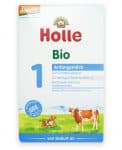 Holle – one Holle – one | Skim Milk, Whey | Lactose, Maltodextrin | Palm, Rapeseed, Sunflower oils | None | None | 0.6 | Organic, Demeter & Carbon Neutral |
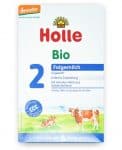 Holle – 2 Holle – 2 | Skim Milk, Whey | Lactose, Maltodextrin, Starch | Palm, Rapeseed, Sunflower oils | None | None | 0.9 | Organic, Demeter & Carbon Neutral |
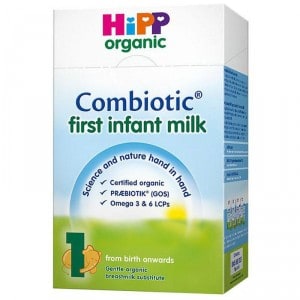 HiPP – 1 (Uk) HiPP – 1 (Uk) | skimmed milk, whey powder (60/40 whey/casein ratio) | Lactose | Palm, Rapeseed, Sunflower oils | GOS (prebiotic) | L-tyrosine, L-phenylalanine, Fifty-tryptophan | 0.5 | Organic |
 HiPP – 1 Hungry (Uk) HiPP – 1 Hungry (Uk) | skimmed milk (lxxx/20 whey/casein ratio) | Lactose | Palm, Rapeseed, Sunflower oils | GOS (prebiotic) | L-cysteine, L-tryptophan | 0.7 | Organic, Soy-Free |
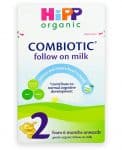 HiPP – 2 (UK) HiPP – 2 (UK) | skimmed milk, whey powder | Lactose | Palm, Rapeseed, Sunflower oils | GOS (prebiotic) | L-tryptophan | 1.0 | Organic, Soy-Free |
 HiPP – 1 (Dutch) HiPP – 1 (Dutch) | skimmed milk, whey powder | Lactose | Palm, Rapeseed, Sunflower oils | GOS (prebiotic), Fifty. Fermentum (probiotic) | L-tyrosine, L-phenylalanine, L-tryptophan | 0.5 | Organic, Soy-Free |
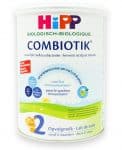 HiPP – 2 (Dutch) HiPP – 2 (Dutch) | skimmed milk, whey pulverization | Lactose | Palm, Rapeseed, Sunflower oils | GOS (prebiotic), L. Fermentum (probiotic) | Fifty-tryptophan | one.0 | Organic, Soy-Free |
 HiPP PRE – (German) HiPP PRE – (German) | Skim Milk, Whey Product, Whey Protein | Lactose | Palm, Rapeseed, Sunflower oils | GOS (prebiotic), L. Fermentum (probiotic) | Fifty-phenylalanine, Fifty-tryptophan | 0.5 | Organic, Soy-Gratuitous |
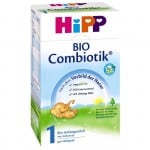 HiPP – one (High german) HiPP – one (High german) | Skim Milk, Whey | Lactose | Palm, Rapeseed, Sunflower oils | GOS (prebiotic) L. Fermentum (probiotic) | L-tyrosine, L-phenylalanine, L-tryptophan | 0.v | Organic |
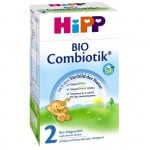 HiPP – two (German) HiPP – two (German) | Skim Milk, Whey | Lactose, Starch | Palm, Rapeseed, Sunflower oils | GOS (prebiotic) Fifty. Fermentum (probiotic) | Fifty-tryptophan | one.0 | Organic |
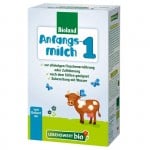 Lebenswert – 1 Lebenswert – 1 | Skim Milk, Whey | Lactose | Palm, Rapeseed, Sunflower oils | None | None | 0.seven | Organic, Soy-Free |
 Lebenswert – 2 Lebenswert – 2 | Skim Milk, Whey | Lactose, Maltodextrin | Palm, Rapeseed, Sunflower oils | None | None | 0.9 | Organic, Soy-Complimentary |
 Loulouka – 1 Loulouka – 1 | Skim Milk, Whey (60/forty whey/casein ratio) | Lactose | Sunflower, Coconut, Rapeseed, oils | None | None | i.2 | Organic, Soy-Gratuitous |
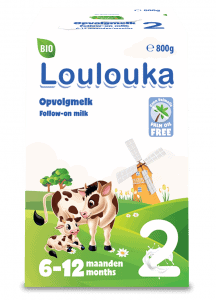 Loulouka – 2 Loulouka – 2 | Skim Milk, Whey | Lactose, Maltodextrin | Sunflower, Kokosnoot, Rapeseed, oils | None | None | i.5 | Organic, Soy-Free |
 Kendamil – 1 Kendamil – 1 | Whole Milk, Whey (lx/xl whey/casein ratio) | Lactose | Milk fatty, Sunflower, Coconut, Rapeseed, oils | GOS (prebiotic) | None | i.1 | Organic, Soy-Free |
| Kendamil – 2 | Whole Milk, Whey (l/fifty whey/casein ratio) | Lactose | Milk fatty, Sunflower, Coconut, Rapeseed, oils | GOS (prebiotic) | None | 1.two | Organic, Soy-Costless |
You are amazing for making it this far! I know it'southward and so hard choosing the right formula for your precious baby! Y'all should feel actually practiced about everything you just learned that will help you lot make the perfect choice.
If you lot're using a European formula, I'd honey to know which one, and how information technology's working for you!
Happy digesting to the tiny tummies in your firm,
xo Dr. Young
References:
- European Food Prophylactic Authority (EFSA) Console on Dietetic Products, Nutrition and Allergies (NDA). Scientific Opinion on the Essential Composition of Baby and Follow-on Formulae. EFSA Journal 2014; 12(7): 3760.
- European Commission; Health and Consumer Protection Directorate – General. Scientific Committee on Food. Study of the Scientific Commission on Nutrient on the Revision of Essential Requirements of Babe Formulae and Follow-on Formulae. 2003: AXFR/CS/NUT/IF/65 Terminal. Brussels, Belgium.
- U.s.a. Nutrient and Drug Administration. Title 21 – Food and Drugs, Chapter I – Food and Drug Administration Department of Health and Human Services, Subchapter B – Nutrient for Human Consumption, Part 107 – Infant Formula. Code of Federal Regulations. Title 21 (ii): April i, 2017.
- The European Commission. Commission Delegated Regulation (Eu) 2016/127. September 25, 2015.
Source: https://babyformulaexpert.com/european-formula/
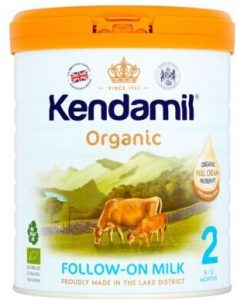
0 Response to "What Is Adequate Treatment for Babies With Gbs+ Moms"
Post a Comment